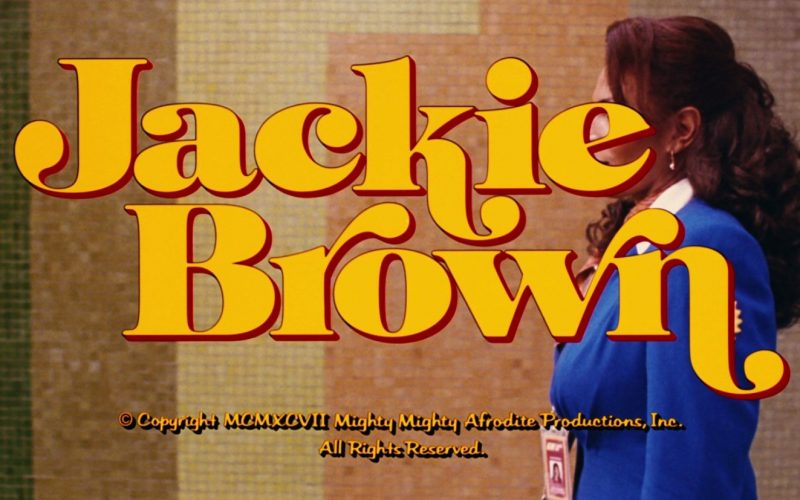Quentin Tarantino’s first 25 Years, Part 3 – Jackie Brown (1997).
5 years and two films into his directing career Quentin Tarantino unleashed his third feature film upon salivating audiences. His first incendiary film Reservoir Dogs exploded onto screens in 1992 and remains one of the most iconic debuts ever seen. His follow up film, Pulp Fiction is one of the most beloved films of all time and achieved a level of iconography that few films could ever hope to match. Both movies existed in a colourful, hyper-stylised universe, the Tarantinoverse if you will and both films eschewed convention with non-linear narratives and scripts that were replete with pop-culture reverie and über cool characters. Pulp Fiction would breathe a renewed life into the career of John Travolta as well as propelling the career of late bloomer Samuel L. Jackson into the stratosphere. And so it was in 1997 that Tarantino made his third film, the rather innocuously titled Jackie Brown. The film concerns the titular character, a flight attendant who runs money in and out of the country for a ruthless gun runner and finds herself trying to swindle him out of half a million dollars after she gets caught by the authorities with whom she then tries to strike a deal in order to receive a reduced sentence.
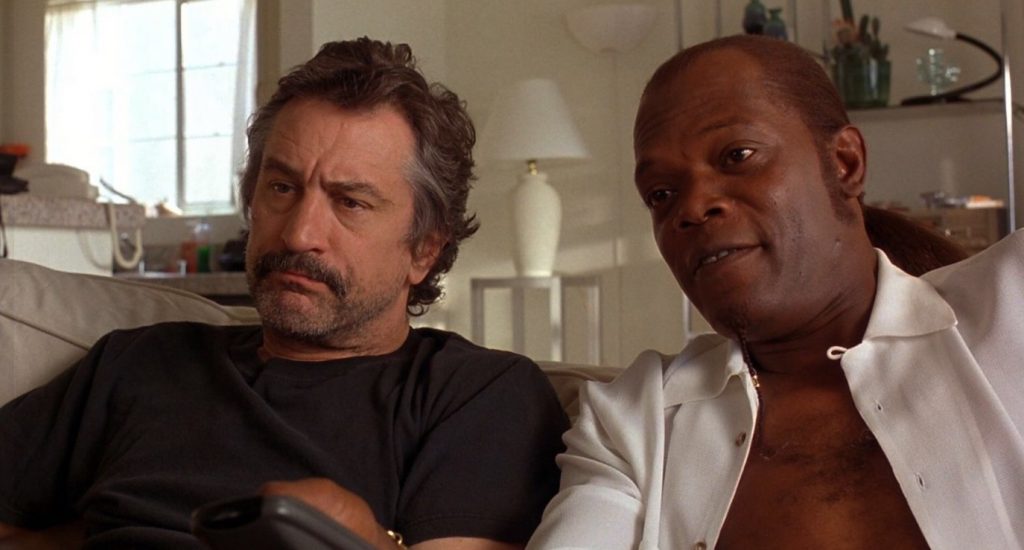
In Elmore Leonard’s novel, Rum Punch, upon which the film is based, the main character is a blonde, white woman but for the filmed version Tarantino choose instead to cast Pam Grier, star of ’70s Blaxploitation films such as Coffy (1973) and Foxy Brown (1974). Grier was in her late 40s playing a 44 year old and had passed the peak of her career 20 years earlier so casting her in the starring role was reminiscent of Tarantino’s casting of Travolta in Pulp Fiction three years earlier. Another actor of similar standing at the time was Robert Forster who played bail bondsman Max Cherry. Both Grier and Forster play their respective roles in a way that marks them as the antithesis of the almost cartoonish caricatures we saw in Pulp Fiction with their very self aware and stylised dialogue. Jackie and Max are the most down to earth characters in the Tarantinoverse but are far more likeable because they’re inherently decent people in an indecent world. Samuel L. Jackson rounds out the third of the key players as the ruthless gun runner, Ordell Robbie. Far from a rehash of his character Jules Winnfield in Pulp Fiction, Ordell is far less honourable and much more of a ruthlessly cold blooded killer. Jackson is again superb and commands the screen with his cool, Kangol attired intensity.
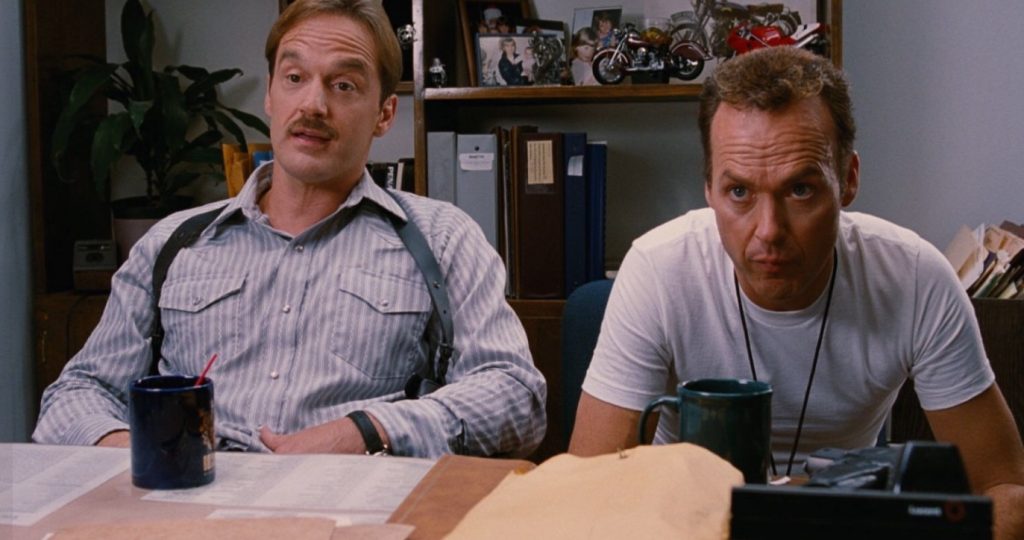
The supporting cast, just as it was in Pulp Fiction, is another grab bag of the cream of the late ’90s acting crop. Chief amongst these is Robert De Niro as Louis Garr, Ordell’s partner in crime. De Niro had yet to begin his decline into lesser roles in 1997 and took a supporting role that gave him little to challenge his acting chops but underneath his stoner veneer lies his ever present intensity which comes to the fore in one of the film’s few explosive moments of violence. Also on board are Bridget Fonda, Michael Keaton (who would play the same character in Steven Soderbergh’s Out Of Sight the following year), Chris Tucker, Tommy ‘Tiny’ Lister and Michael Bowen, all of whom are on fine form.

So with his stellar cast assembled and his segue into adapting an existing novel as opposed to his own original screenplays, Tarantino delivers what would be the first of several homage style films. This one clearly a love letter to the Blaxploitation sub-genre he so revered. Looking back now it’s clear that Tarantino took something of a diversion away from what was expected of him at the time. Reservoir Dogs and Pulp Fiction have many overt similarities in both style, structure and execution with their complex, non-linear narratives which are here eschewed in place of a straightforward chronology with the one exception being when we later see the final money exchange told three times from different character’s points of view. Like in his previous two films this is a crucial storytelling device as opposed to being just a flashy stylistic choice. It was the case back in 1997 and remains so now that Jackie Brown is the most individually unique films of the director’s oeuvre. It has a leisurely almost languid pace of storytelling with more naturalistic dialogue and none of the bold outbursts of shocking violence for which Tarantino is renowned. The few scenes of violence are played with a significant restraint and are either slightly off screen, shot from a distance or otherwise obscured. This change of style certainly came as a surprise to me when I first saw the film upon its initial release two decades ago but it was a welcome one as trying to outdo his own previous two films would have been near impossible and the unexpected direction he took was so refreshing and put to rest accusations that he was a one-trick pony.
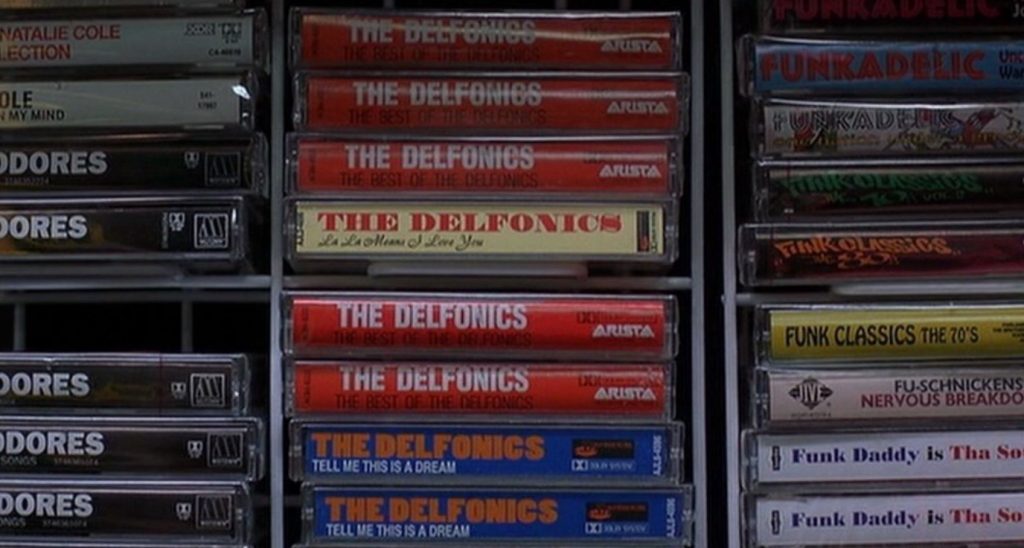
What Jackie Brown had in keeping with its predecessors but in a slightly different, more subtle vain was an über cool vibe throughout. The film’s strong ’70s influence plays on feelings of longing nostalgia to those who lived through or just have an affinity with that time period. The musical choices for which Tarantino is so renowned this time veer far more heavily towards a particular style, in this case soul and his song choices are perfectly in keeping with the characters’ heritage and age. All of this is perfectly encapsulated in what must be one of the most achingly cool openings to a film in recent memory where we first meet our beautiful female protagonist to the tune of Bobby Womack’s utterly sublime “Across 110th Street”. The film’s bold yellow/orange title font is the same as that of Grier’s 1974 cult classic, Foxy Brown, thus rubber stamping the homage style that Tarantino was clearly taking here.
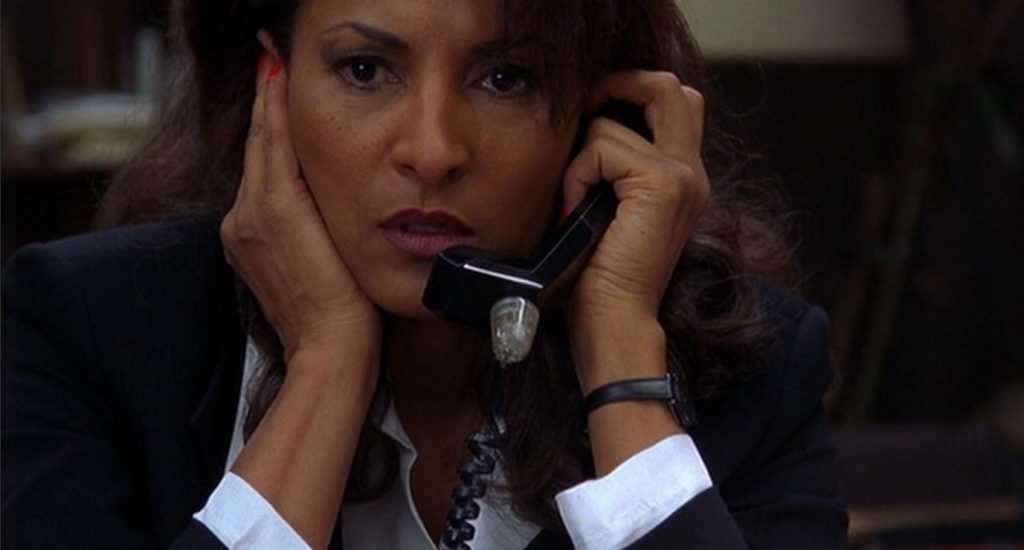
There are other minor stylistic flourishes seen in Jackie Brown that follow this homage style. During Jackie’s court hearing early on in the film Tarantino uses a split diopter, a technique that was used repeatedly by Brian De Palma, a director frequently cited as one of Tarantino’s many influential heroes. Whereas the extended scenes of dialogue in Pulp Fiction could be described as riveting but ultimately shallow small talk, here the same scenes serve to enrich the characters, to give them a much needed depth as we see these middle-aged, regular Joes and Josephines lamenting or at least evaluating their lives for better or worse. The scene with Jackie and Max discussing her resistance to move from vinyl to CD now plays somewhat differently to how it did 20 years ago and in a very pleasing way given the recent resurgence in popularity of vinyl in this very much digital age. The message of nostalgia still plays the same but it’s a nice little unintended twist.
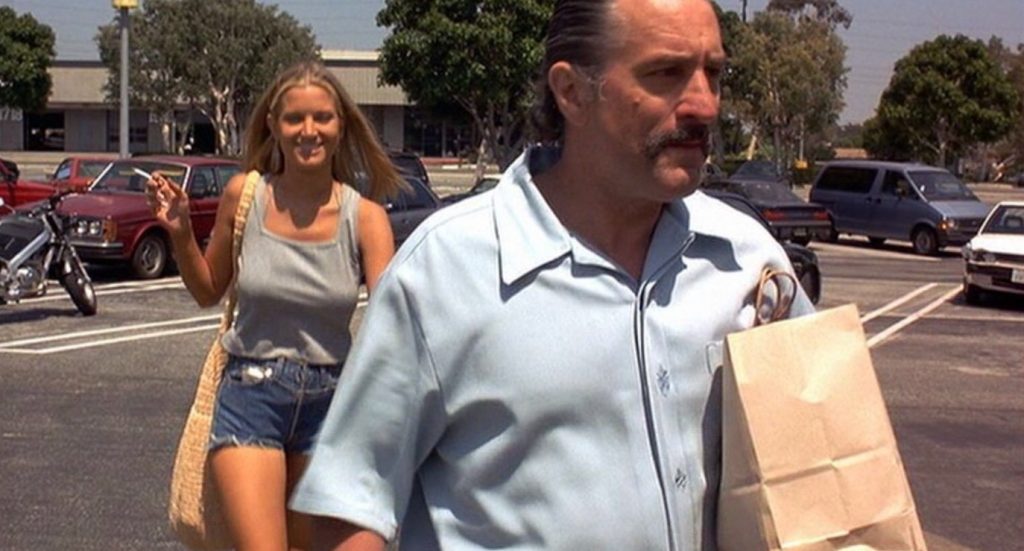
There’s something inherently intriguing about watching someone attempting to pull off a complex scam. Films such as The Sting and Catch Me If You Can play on this factor and Jackie Brown does it so well because our heroine isn’t doing it out of greed but out of a sense of self preservation making it that much easier for the audience to root for her. That Tarantino does such a great job to flesh her out and make us fall in love with her through Max Cherry’s eyes forms the crux and heart of the story. In its depiction of real people in real life situations and engaging in real relationships, Jackie Brown remains the one film of Tarantino’s that’s has one foot firmly set outside of the hyper-stylised Tarantinoverse that the rest of his films inhabit and it’s all the better for it. It has a beautiful autumnal quality to it and is more akin to a film made in the twilight years of a director’s career as opposed to being only their third feature film. It showed the world that Tarantino had great breadth and a range of directorial capability that suggested that he could turn his hand to any number of different genres and styles of filmmaking. Whether he has lived up to that promise is up for debate, but he’s certainly given it a go by dipping his creative brush into various different genres such as Asian cinema, Grind-house, War films and Westerns in the years following Jackie Brown. Tarantino certainly can be very polarising and has his detractors but I defy anyone to deny that Jackie Brown is a film that shows a commendable maturity in spite of its stylish veneer.
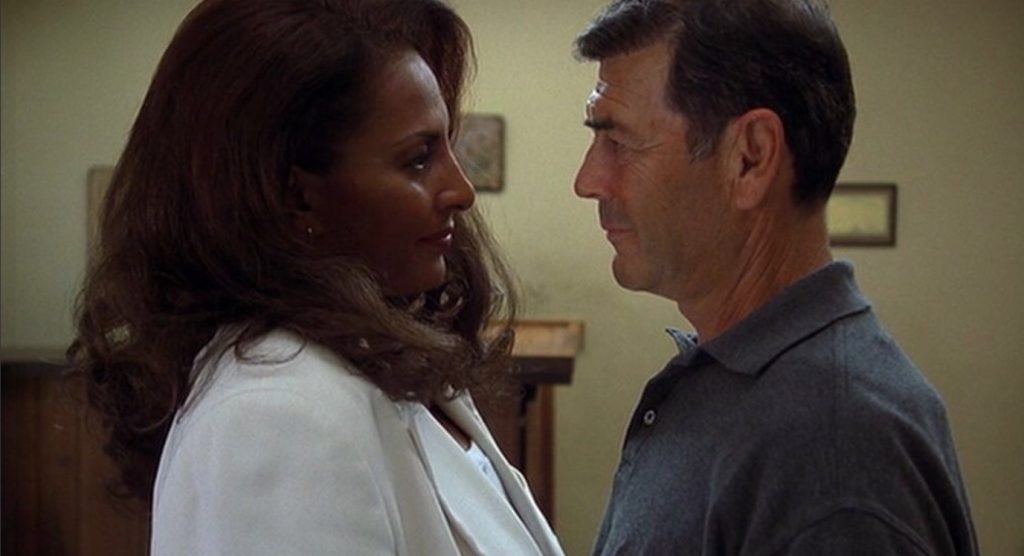
Whilst Tarantino’s first two films were hugely influential and more than made their mark on the cinematic landscape of the ’90s, Jackie Brown wasn’t in the same league in terms of its subsequent success and lasting impact. This really is a shame as it’s easily Tarantino’s least self indulgent and most mature film and for those who are put off by the director’s self created, hyper-stylised universe and often cartoonish characters, it remains for many his best film. It shows a far more careful and considered approach to building layered characters and was far less a case of style taking centre stage over the actual story itself, a factor that could be said to apply to some of his later films.
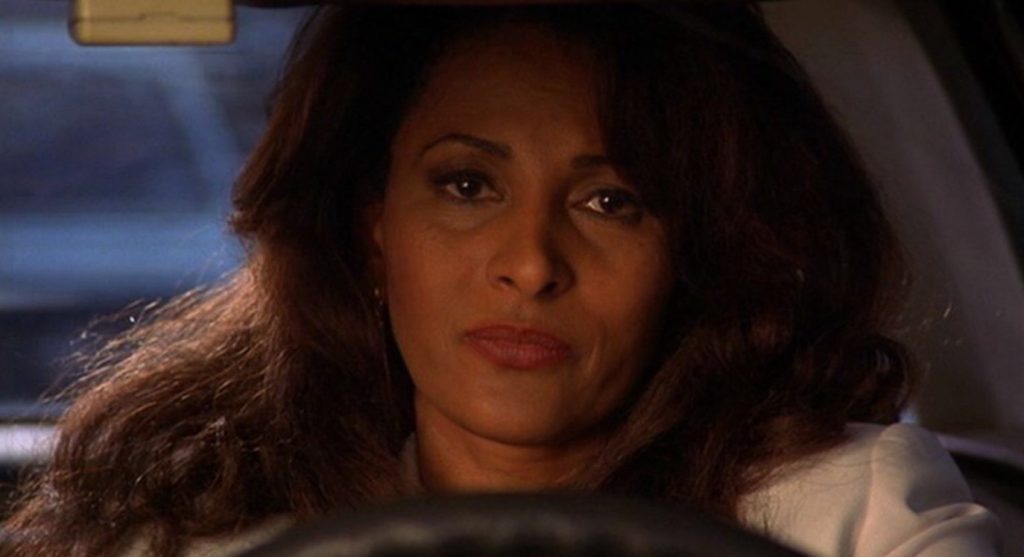
My opinion of Jackie Brown has remained the same since I first walked out of the cinema 20 years ago with a broad smile on my face. It played to my own love of Blaxploitation cinema, the accompanying music of those films and the ’70s in general. It was one of the most surprisingly refreshing films I’d seen and to this day has some of the best use of existing music of any film I’ve seen. The performances across the board are superb especially the wonderful Pam Grier and the 154 minutes fly by in spite of a relative lack of action compared to Tarantino’s other films. For a time I considered Jackie Brown to be his best film, a potentially controversial opinion given how great some of his films are. Whilst my opinion of the director himself has had its ups and downs in the quarter of a century that he’s been making feature films, my love of Jackie Brown has remained constant. It’s Tarantino’s most romantic film in both the traditional sense of the very real human relationships it depicts but also in its celebration of a bygone era and the films of that period. It’s a different beast to the film most consider to be his magnum opus, Pulp Fiction, but it has the same effortless style and charm but is far less knowingly self indulgent than some of his films. Jackie Brown is a movie that I’ve always loved. It represents the peak of Tarantino’s maturity as a director and more than that, is a beautifully crafted love letter to a bygone era of both film and popular culture.
Film ’89 Verdict – 10/10

